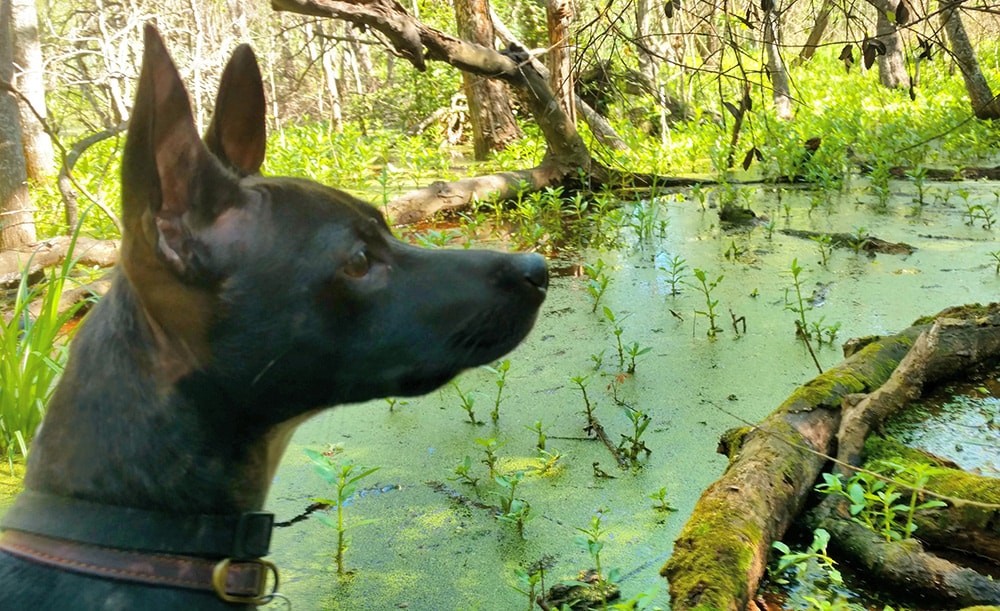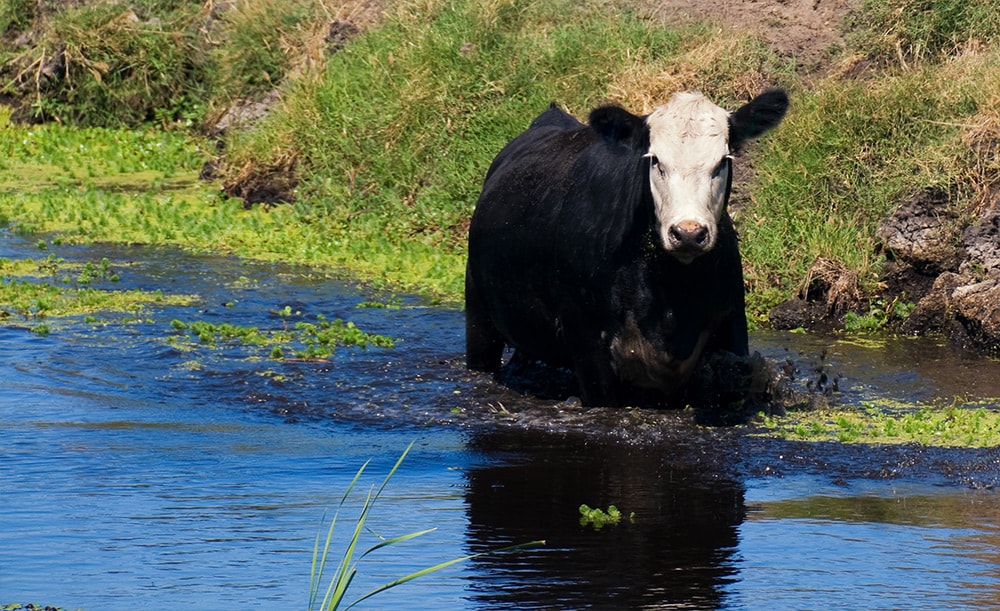Illness and Symptoms: Cyanobacteria in Fresh Water

In fresh water, such as lakes and ponds, harmful blooms are most commonly caused by cyanobacteria (also called blue-green algae), which are a kind of single-celled organism called phytoplankton.
Some cyanobacteria produce toxins (poisons) called cyanotoxins. When people or animals are exposed to cyanotoxins, they can become sick.
Symptoms depend on:
- How a person or animal was exposed
- How long they were exposed
- Which type of toxin they were exposed to
People or animals can be exposed to cyanotoxins by:
- Skin contact with water containing toxins while swimming or doing other activities in the water
- Drinking water containing toxins
- Breathing in tiny droplets in the air that contain toxins
- Eating fish or shellfish that contain toxins
- Eating contaminated blue-green algae nutritional supplementsexternal icon
Learn more about how people and animals are exposed.
Common cyanotoxins that can make people and animals sick include:
- Microcystin
- Cylindrospermopsin
- Anatoxin
- Guanitoxin, formerly known as anatoxin-a(S)
- Saxitoxin
- Nodularin
- Lyngbyatoxins

Learn how to protect yourself and your loved ones from cyanobacteria and their toxins.
People can get sick and have symptoms.
People exposed to cyanotoxins through touching or swimming in contaminated water or breathing in droplets of contaminated air may experience irritation of the:
- Skin
- Eyes
- Nose
- Throat
- Lungs
People exposed to cyanotoxins by eating contaminated food or dietary supplements, or by swallowing contaminated water, may experience the following symptoms, depending on the cyanotoxin involved:
- Stomach pain
- Headache
- Neurological symptoms (for example, muscle weakness, dizziness)
- Vomiting
- Diarrhea
- Liver damage
If you think you may have symptoms caused by harmful cyanobacteria in fresh water, you can:
- Talk to your healthcare provider for advice about how to relieve your symptoms. Let them know that you might have recently come in contact with cyanobacteria or its toxins. Information about the suspected cause of your illness might help your healthcare provider manage your symptoms.
- Call your poison control centerexternal icon hotline at 1-800-222-1222. The specialists might be able to provide information about illnesses caused by cyanobacteria.
- Report any illnesses that you believe were caused by cyanotoxins to your local or state health department. This can help them understand and prevent illnesses caused by cyanobacteria. It may also help prevent someone else from getting sick. Some state health departments have forms on their websites or hotlines for reporting illnesses directly to the health department.
Mammals
Toxins from cyanobacteria can make animals very sick or even kill them. Animals can die within hours to days of swallowing toxins.
Seek veterinary care immediately if your pets or livestock seem sick after going in or near water.
Mammals (including pets, livestock, and wildlife) can be poisoned by swimming in or drinking water containing cyanotoxins or eating cyanobacteria, fish, or other animals containing cyanotoxins.
Dogs are especially at risk of poisoning because of their behaviors, which can include swimming in contaminated waters, drinking contaminated water, eating dead fish and other animals found near a bloom, and licking algae or scum from their fur after swimming. Pets may also be poisoned if they eat dietary blue-green algae supplementsexternal icon that are contaminated with cyanotoxins.
Cattle are at risk because their movements are often confined by fencing and they may be forced to drink from ponds that can have cyanobacterial blooms.
Marine mammals, such as southern sea otters, may also be poisoned by cyanobacterial toxins. In 2007, 21 sea otters were killed by cyanotoxins flowing into Monterey Bay from a river with a large cyanobacterial bloom. Learn more about these sea otters.


Mammals who are exposed to cyanotoxins may experience the following signs, depending on how much they are exposed to:
- Excessive salivation
- Vomiting
- Fatigue
- Staggered walking
- Difficulty breathing
- Convulsions
- Liver failure
- Death within hours or days
Birds
Cyanotoxins can harm or kill birds. Sometimes birds can be exposed to cyanotoxins and avian botulism, a disease that can paralyze birds, at the same time. There is some research that shows that the organism that produces the avian botulism toxin may grow better in the presence of cyanobacteria.
Fish and aquatic animals
Cyanobacteria and cyanotoxins can harm fish and other aquatic animals in several ways.
The toxins may directly kill the animals. When a harmful algal bloom caused by cyanobacteria decomposes, it can use up the oxygen in a body of water. When this happens, fish and other animals that live in water may not have enough oxygen to breathe and may die. Large amounts of cyanobacteria in the water can also make it difficult for animals with gills to breathe.
The long-term health effects of being exposed to cyanobacteria or their toxins in people and animals remain unclear. Because we are still learning about the long-term health effects, it’s important to take steps to keep yourself and your pets safe, such as not going into water containing large amounts of cyanobacteria or high levels of cyanotoxins. Learn more about how to prevent exposure to cyanobacteria and cyanotoxins.
Talk with your health care provider if you have questions about your health and exposure to cyanobacteria.
BMAA
There is some concern that exposure to BMAA (Beta-N-methylamino-L-alanine), a compound that may be made by cyanobacteria, is a risk factor for neurologic diseases like ALS (amyotrophic lateral sclerosis). Some research involving animals showed that BMAA has harmful effects on the brain. However, more research is needed to understand the potential link between BMAA and brain diseases in people and animals. In 2017, the U.S. Environmental Protection Agency published a critical review external iconthat looked at the suspected role of BMAA in brain diseases in people. The review concluded that existing data do not show that BMAA causes brain disease.

